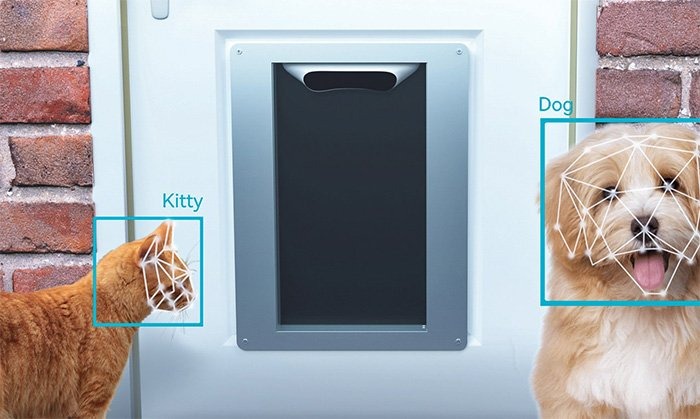
Can Cats Really Be Trained? Yes—Here’s How.
Think cats can’t be trained? Think again. Contrary to popular belief, felines are intelligent and capable of learning a variety of behaviors—from simple commands to complex tricks. With the right techniques, patience, and positive reinforcement, you can successfully train your cat while strengthening your bond and reducing behavioral issues. Discover how training can enrich your cat’s life—and yours too.
🐶 Pet Star
52 min read · 17, Jul 2025

Introduction
Cats have long carried a reputation of being independent, aloof, and untrainable. Unlike their canine counterparts, felines are often thought to march to the beat of their own drum—unconcerned with commands, tricks, or structured learning. However, this popular belief is misleading. The truth is, cats can be trained, and in many cases, they enjoy the mental stimulation that comes with it. With the right approach, techniques, and understanding of feline psychology, training a cat is not only possible—it can also strengthen the bond between pet and owner, enrich a cat’s environment, and reduce problematic behaviors.
In this comprehensive article, we’ll explore why cats can be trained, the principles behind feline learning, how to train your cat effectively, common training goals, and troubleshooting behavioral issues. By the end, you’ll feel confident that even the most independent feline can learn new tricks.
Why Train a Cat?
Training a cat isn't about dominating or controlling it—it's about communication and cooperation. Here are a few reasons why cat training is beneficial:
- Mental stimulation: Training keeps your cat's brain active and engaged.
- Behavioral control: Helps manage and reduce unwanted behaviors.
- Enrichment: Adds variety and fun to daily life.
- Improved vet visits: Teaching cats to tolerate handling makes vet visits easier.
- Stronger bond: Builds trust and understanding between you and your cat.
Understanding Feline Psychology
Before jumping into training techniques, it's important to understand how cats think and learn.
1. Cats Are Not Small Dogs
Cats are solitary hunters by nature, unlike dogs who evolved in packs. This means they don’t respond to social hierarchy or pack leadership in the same way. Instead of trying to “lead” your cat, think of training as motivating and enticing them to perform behaviors.
2. Cats Respond to Positive Reinforcement
Cats are extremely responsive to positive reinforcement. This means rewarding behaviors you like and ignoring or redirecting behaviors you don’t. Punishing cats (yelling, spraying water) doesn’t work well—it can backfire by increasing fear or anxiety.
3. Cats Learn Through Association
Cats learn by associating actions with outcomes. For example, if sitting on command leads to a treat, your cat will associate sitting with rewards.
Training Tools You’ll Need
Training a cat requires very few supplies, but these tools can make the process smoother:
- Clicker: A small device that makes a clicking sound to mark the correct behavior.
- Treats: Use high-value, soft treats your cat loves (e.g., chicken, tuna).
- Target stick: A tool to guide your cat’s movement.
- Patience: Cats move at their own pace, so consistency and calm are key.
Basic Training Principles
Let’s explore the foundational principles for training a cat effectively:
1. Keep Sessions Short
Cats have short attention spans. Limit training sessions to 5–10 minutes, once or twice a day.
2. Choose the Right Time
Train when your cat is alert, not right after meals or during naps.
3. Use High-Value Rewards
Find treats that are irresistible to your cat. Some cats prefer petting or play over food—use what works.
4. Be Consistent
Use the same cues, hand signals, and rewards consistently. If your cat gets confused, take a step back.
5. Never Punish
Avoid punishment—this includes shouting, swatting, or spraying with water. Instead, ignore undesired behaviors and redirect attention.
What Can You Train a Cat to Do?
You’d be surprised by how much your cat can learn. Here are some of the most common and useful cat training goals:
1. Name Recognition
Teach your cat to come when called. Use their name positively and reward every time they respond.
2. Sit on Command
Start with a treat held above their head. Move the treat backward until they sit, then mark (with a click or “Yes!”) and reward.
3. Come When Called
Use a consistent verbal cue (“Come here!”) and reward generously. Practice in short distances before increasing range.
4. Target Training
Use a stick or your hand as a target. Reward your cat when they touch it. This is helpful for more advanced tricks.
5. High-Five or Paw Shake
Hold out your hand and gently tap a paw while saying “Shake.” Reward immediately. With repetition, they’ll begin lifting the paw voluntarily.
6. Go to a Mat or Bed
Train your cat to go to a specific spot using treats and a cue word like “Mat.”
7. Leash Training
Cats can learn to walk on a harness and leash. Start indoors, allowing your cat to adjust to wearing a harness. Then move to short walks.
Addressing Problem Behaviors Through Training
Training isn’t just about cute tricks—it’s also useful for correcting behavioral issues.
1. Scratching Furniture
Redirect your cat to scratching posts. Reward them for using it. Use deterrent sprays or tape on furniture in the meantime.
2. Jumping on Counters
Ignore or remove them without attention. Reward them for staying on the floor or using designated climbing structures.
3. Biting or Aggression
Identify the trigger (overstimulation, fear, play). Use positive reinforcement to encourage gentle behavior and provide appropriate outlets for play.
Clicker Training: A Powerful Technique
Clicker training is one of the most effective ways to train a cat. The “click” marks the exact moment your cat does the desired behavior.
Steps:
- Start by associating the clicker with treats (click → treat).
- Once the cat understands the click means reward, pair it with behaviors like “sit” or “come.”
- Over time, the behavior becomes solidified with the cue word and click.
How Long Does It Take to Train a Cat?
There’s no one-size-fits-all timeline. Some cats learn behaviors in a few days; others take weeks. The key is to move at your cat’s pace, remain consistent, and avoid forcing anything.
Common Mistakes to Avoid
- Punishing your cat
- Being inconsistent with cues
- Training when your cat is tired or stressed
- Using rewards your cat doesn’t care about
- Expecting dog-like obedience
Cats are often thought of as solitary, stubborn, and independent creatures who cannot be taught much beyond using a litter box, but this perception is outdated and misleading; in reality, cats are highly intelligent animals capable of learning various behaviors and tricks through positive reinforcement and consistent training, much like dogs, though their motivations and learning processes are different, meaning cat training requires patience, understanding, and the right approach to succeed, beginning with recognizing that cats are not small dogs and should not be trained as such, since they do not respond to dominance-based methods or hierarchical pack logic but rather rely on individual experiences, routines, and the associations they form between behaviors and outcomes, making the most effective training technique one that uses rewards—typically in the form of treats, toys, or affection—to reinforce desired behaviors while ignoring or gently redirecting undesired ones, a process known as positive reinforcement; for example, if a cat learns that coming when called results in a tasty treat or engaging playtime, it is likely to repeat the behavior, not because it wants to please its owner but because the action leads to a rewarding result, and this foundational concept can be applied to a range of training goals, including teaching a cat to sit on command, high-five, walk on a leash, use a scratching post instead of furniture, or even tolerate brushing and veterinary visits more calmly, all of which begin with short, focused sessions lasting no more than 5–10 minutes, once or twice a day, using consistent cues and rewards tailored to the cat’s preferences—be it a soft chicken morsel, a favorite toy, or head scratches—while ensuring the environment is quiet, distraction-free, and the cat is alert and motivated, not tired or full from a recent meal, and for those seeking more structure, clicker training is an excellent method in which a small handheld device clicks to mark the exact moment a desired behavior occurs, followed by a reward to reinforce it, allowing the cat to form a clear connection between action and outcome, and over time, with repetition, the behavior becomes a conditioned response to a verbal or visual cue; however, it’s also crucial to manage expectations because cats learn at different paces depending on their age, personality, background, and past experiences—some may pick up “sit” in a few days while others may need several weeks, and older cats are often just as capable as kittens, although it may take slightly more time and effort to keep them engaged—yet no matter the age, the benefits of training extend beyond fun tricks, as it also serves as an effective tool for addressing behavioral issues like scratching furniture, biting, aggression, or jumping on counters, by redirecting the behavior to a positive alternative (such as using a scratching post or playing with appropriate toys) and rewarding the better choice consistently, and it’s important to remember that punishment—yelling, spraying water, or physical reprimands—should never be used, as it damages trust, increases stress, and often worsens the behavior rather than corrects it, whereas calm, consistent redirection paired with praise and treats strengthens the bond between cat and owner, enhances communication, and makes the household environment more harmonious for everyone involved, and with this understanding, owners can train their cats to respond to names, come when called, sit, stay, shake paws, or even perform agility tasks if the right motivation and reinforcement are applied, and tools such as a clicker, target stick, treats, and harness can make the process smoother, though the real key lies in the handler’s consistency, tone, and willingness to go at the cat’s pace, adapting the method as needed and celebrating small wins along the way, since even small progress, like a hesitant paw lift or a slight shift in behavior, should be acknowledged with a reward to build trust and enthusiasm; furthermore, for cats with more complex needs or behavioral challenges, training becomes not just a luxury but a necessity, helping manage stress, fear, or aggression through carefully structured sessions that give the cat a sense of control and predictability, reducing anxiety and promoting healthy behavior patterns over time, and one especially effective strategy is target training, where the cat is taught to touch or follow a stick or finger, enabling you to guide their movement without physically forcing them, which is particularly useful for vet visits, crate training, and getting cats used to new environments or stimuli, and similarly, leash training—while requiring patience and gradual desensitization to the harness—can be very rewarding, especially for indoor cats needing safe outdoor enrichment, and by letting them explore new sights and smells under supervision, you can offer them mental stimulation and physical activity in a controlled, secure way; and despite popular myths that claim cats are aloof or uncooperative, the truth is that training works incredibly well when it’s based on mutual respect, understanding, and clear communication using cues the cat understands and incentives it values, and though cats may never perform with the same eagerness as dogs, they will willingly and enthusiastically participate when the reward is compelling enough, so with time, patience, and the right mindset, you can turn your feline friend into a confident, responsive companion who not only performs desired behaviors but enjoys doing so—proving once and for all that cats are not just trainable, but perhaps even more clever and capable than we’ve given them credit for.
Cats, often seen as independent and aloof animals, have long carried the myth that they are untrainable creatures, unlike their canine counterparts who have a reputation for loyalty and obedience; however, this belief is not only misleading but also overlooks the intelligence, adaptability, and learning potential of the domestic cat, which can indeed be trained effectively when approached with patience, consistency, and the right motivational tools, particularly through positive reinforcement techniques that reward desirable behaviors with treats, praise, or play rather than punishing undesirable ones; understanding that cats are not small dogs is crucial to successful training because their evolutionary path as solitary hunters, not pack animals, means they do not respond well to dominance-based training or hierarchical thinking, but rather thrive in environments where they can form individual associations between their actions and outcomes, which is why they learn best when they are able to connect a specific behavior, such as sitting or coming when called, with a positive result like a treat or a fun game; before training begins, it’s important to identify what motivates your cat—some respond to food, others to toys, and some to affectionate touch—and this reward should be given immediately after the desired behavior occurs to strengthen the association, and for even greater precision, many trainers use clickers—small devices that make a clicking sound the moment a correct action is performed, followed by a reward, teaching the cat over time that the click equals a reward and the behavior that triggered the click is worth repeating, creating a clear, consistent learning pathway; common cat training goals range from simple commands like teaching the cat to respond to their name or sit on command, to more complex behaviors like walking on a leash, using a scratching post instead of furniture, giving a high-five, jumping through hoops, or staying off counters, and all of these can be achieved through short, focused sessions—ideally five to ten minutes long—held once or twice a day when the cat is alert, hungry, and in a calm environment free from distractions; one of the easiest and most useful tricks to start with is name recognition, where you simply say your cat’s name followed by a reward whenever they look at you or approach, and with repetition, they learn to associate their name with positive experiences and will start responding consistently, which then lays the foundation for other commands such as “come,” “sit,” and “stay,” each of which should be introduced gradually using visual or verbal cues paired with treats, ensuring that the cue is clear and consistent across training sessions; leash training, although more advanced, is another valuable skill that opens the door to safe outdoor exploration and enrichment, especially for indoor cats who benefit greatly from the stimulation of new sights, sounds, and smells, and this process begins by getting the cat used to a comfortable, secure harness indoors, allowing them to wear it without pressure until they seem relaxed, then gradually introducing the leash and later, short indoor walks, before finally progressing to quiet outdoor spaces where the cat feels safe; another powerful method is target training, where you teach your cat to touch a designated object, like the end of a stick or your hand, and then use that target to guide them through behaviors such as jumping onto a stool, walking to a mat, or stepping into a carrier, which can be particularly helpful for vet visits or travel by giving the cat a sense of control and familiarity during potentially stressful situations; behavioral issues such as scratching furniture, biting during play, or jumping on counters can also be effectively addressed through training by identifying the root cause of the behavior, providing an appropriate outlet—like a scratching post or interactive toy—and consistently rewarding the desired alternative while ignoring or gently redirecting the unwanted action without resorting to punishment, which often leads to increased fear, anxiety, or aggression in cats, and damages the bond between pet and owner; instead, reinforcing calm, positive behaviors and setting up the environment for success—such as placing double-sided tape on furniture or using deterrent sprays while offering rewarding alternatives—encourages the cat to make good choices on their own, which is the essence of successful feline behavior modification; while some cats may take to training quickly, others will need more time and encouragement, and it's vital to remain patient and celebrate small successes, whether that means a tiny head turn toward you when you call their name or the first time they stay seated for more than a few seconds, because each of these milestones builds the path toward more consistent and reliable responses, and unlike dogs, who often seek to please their owners, cats are more self-directed learners, which means that creating a rewarding, pressure-free learning environment is key to maintaining their interest and motivation; to avoid common training mistakes, cat owners should never punish or yell at their cats for not responding, as this can create fear and mistrust, nor should they train when the cat is tired, overfed, or distracted, and rewards should always be high-value and given consistently to reinforce the correct behavior; it’s also helpful to end each session on a positive note, even if progress is slow, so the cat associates training time with enjoyment and success rather than confusion or frustration, and over time, these short, positive interactions build a stronger bond between cat and owner, increase the cat’s confidence, reduce stress-related behaviors, and make daily life smoother and more enriching for everyone involved; ultimately, training a cat is not about domination or control but about building mutual trust and communication, teaching your cat that good things happen when they engage with you in certain ways, and empowering them with skills that help them navigate their environment more safely and confidently, from learning how to stay calm during grooming and vet visits to playing games that stimulate their mind and reduce boredom, and while the process may take time and require experimentation to find what truly motivates your cat, the rewards are well worth it, resulting in a more interactive, responsive, and happier feline companion who proves beyond a doubt that cats are not only capable of learning but often enjoy it when approached with respect, patience, and a bit of creativity.
Conclusion
Cats absolutely can be trained, but the process requires patience, positive reinforcement, and an understanding of feline behavior. From basic commands like “sit” to more advanced tricks like high-five and leash walking, training offers a wealth of mental enrichment and a stronger human-feline bond.
By focusing on short, consistent sessions, using irresistible rewards, and avoiding punishment, you’ll be amazed at what your cat is capable of. Whether you want to curb unwanted behaviors or simply teach a fun trick, the power to train your cat is in your hands—yes, even if your kitty seems too stubborn or sassy at first!
Q&A Section
Q1 :- Can cats really be trained like dogs?
Ans:- Yes, cats can be trained, but they learn differently from dogs. Cats respond best to positive reinforcement and short, consistent training sessions.
Q2 :- What kind of tricks can I teach my cat?
Ans:- You can teach your cat to sit, come when called, shake paws, high-five, walk on a leash, go to a mat, and even use a toilet or do agility courses.
Q3 :- What are the best treats for cat training?
Ans:- High-value treats like soft chicken, tuna, or commercial cat treats are ideal. Find something your cat loves and use it only during training.
Q4 :- How long does it take to train a cat?
Ans:- It depends on the cat and the behavior you're teaching. Some learn in days, others in weeks. Consistency and patience are key.
Q5 :- Is clicker training effective for cats?
Ans:- Yes, clicker training is very effective. It helps mark the exact behavior you want and reinforces it with a reward.
Similar Articles
Find more relatable content in similar Articles

Senior Pet Adoption: Why Older Animals Make the Best C..
Adopting a senior pet is a pro.. Read More

Smart Homes for Pets: Automated Feeders, Doors, and Mo..
As smart home technology advan.. Read More

How Climate Change Affects Wild and Domestic Animals...
Climate change is dramatically.. Read More

Sustainable Pet Products: What to Look for in 2025...
As sustainability becomes a ce.. Read More
Explore Other Categories
© 2024 Copyrights by rPets. All Rights Reserved.